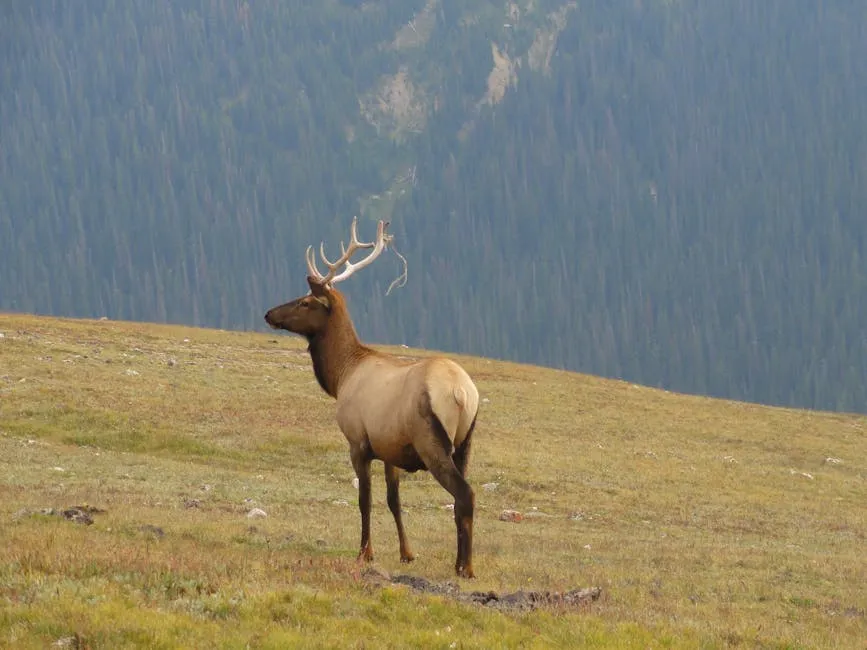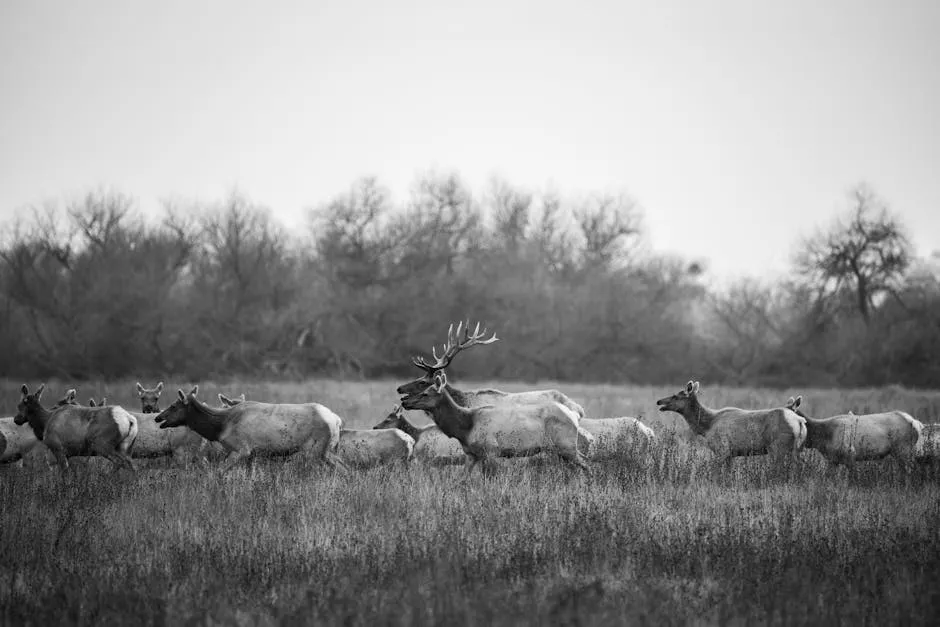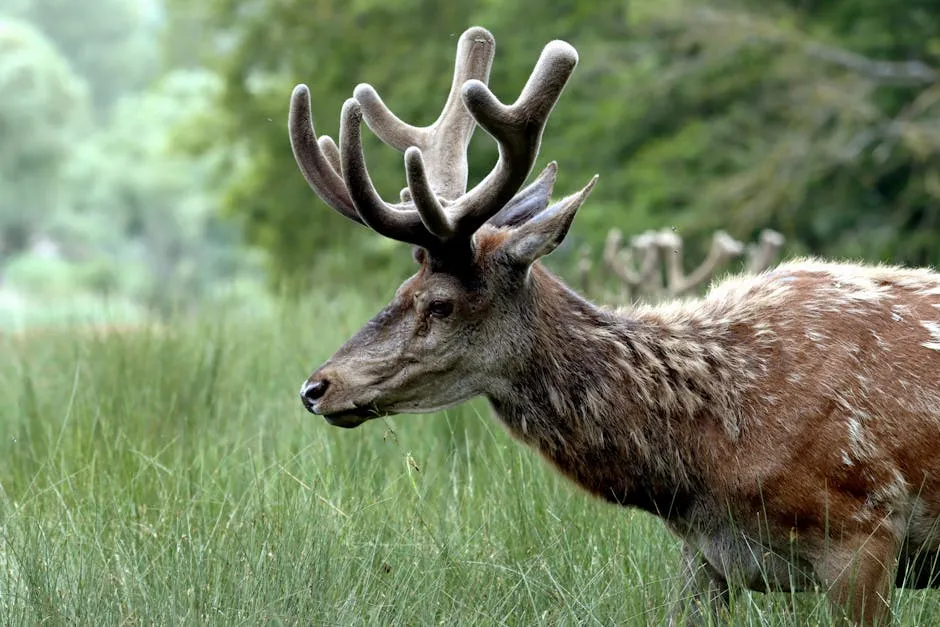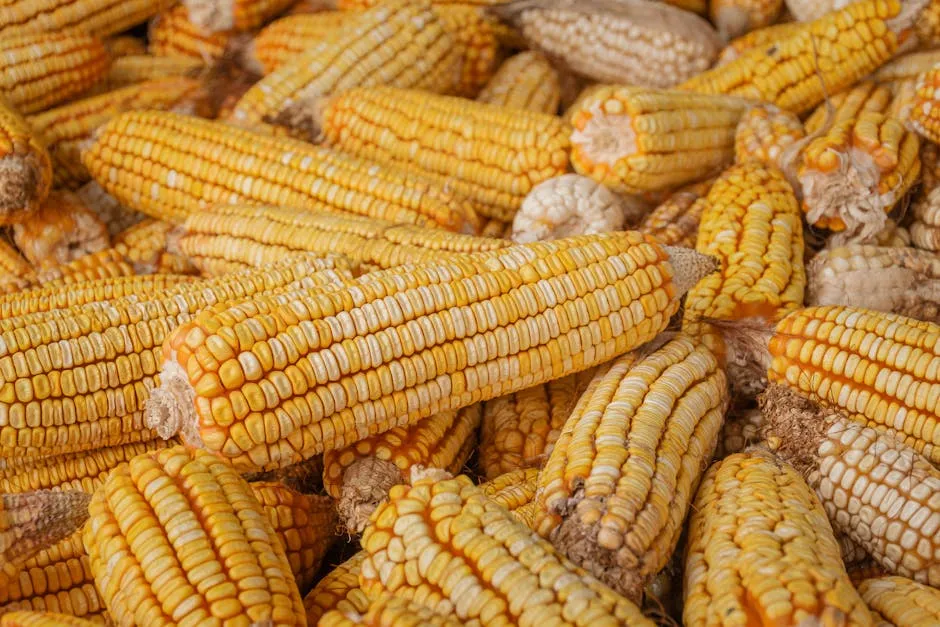Introduction
Elk statistics play a vital role in understanding Colorado’s wildlife landscape. These figures help us grasp the dynamics of elk populations, hunting trends, and conservation strategies. Imagine navigating the vast Colorado wilderness without the right information—it’s like trying to hike up a mountain blindfolded! For hunters, wildlife enthusiasts, and policymakers, elk statistics are essential. They provide insights into population health, hunting license availability, and the success rates of different regions. Hunters can plan their trips better, wildlife lovers can advocate for conservation, and policymakers can make informed decisions to protect these majestic creatures. In this article, we will cover various aspects of elk statistics in Colorado. Expect to learn about current population estimates, distribution patterns, hunting trends, and management practices. Whether you’re a seasoned hunter or a curious observer, this comprehensive guide will equip you with valuable knowledge about Colorado’s elk population. Before you head out into the wild, make sure you have the right gear! A reliable Hunting Backpack with Hydration System can keep you hydrated and ready for your adventure while leaving your hands free for those essential elk calls or binoculars!Understanding Colorado’s Elk Population
Overview of Elk Population in Colorado
Colorado is home to a thriving elk population, with current estimates around 290,000 elk. This number is impressive, but it also tells a story of careful management and conservation efforts. Elk are known for their adaptability, and they thrive in various habitats across the state, from dense forests to open meadows. When it comes to distribution, elk can be found in several regions throughout Colorado. They prefer habitats that provide ample food, cover, and water. The Rocky Mountain region is particularly favored, where rocky terrains and lush valleys create an ideal environment. Elk are often spotted in areas such as the Routt National Forest, the Flat Tops Wilderness, and the San Juan Mountains. These majestic animals are social creatures, often forming herds. In the summer, they tend to gather in higher elevations, seeking cooler temperatures and fresh forage. As winter approaches, elk migrate to lower elevations, where food sources are more accessible. Understanding these patterns is crucial for hunters and wildlife enthusiasts alike. It helps inform when and where to observe or hunt these magnificent animals. The health of Colorado’s elk population is not just a matter of numbers. It reflects the intricate balance between wildlife management, hunting practices, and environmental factors. For instance, recent harsh winters have had significant impacts on elk survival rates. By monitoring these statistics, wildlife agencies can adjust hunting licenses and conservation efforts accordingly, ensuring the continued prosperity of elk in Colorado. In summary, elk statistics in Colorado encapsulate a rich narrative of wildlife management, habitat preservation, and community involvement. The more we understand these figures, the better equipped we are to protect and enjoy the elk population that makes Colorado so unique.
Understanding elk statistics is key to effective wildlife management in Colorado. colorado elk statistics
Elk Population Trends
Historical Trends
Elk populations in Colorado are fascinating. Once dwindled to mere thousands, conservation efforts have worked wonders. In the early 1900s, elk were near extinction. Thanks to dedicated reintroduction programs, numbers soared. Today, we boast around 290,000 elk! Conservationists and wildlife agencies deserve a round of applause. They’ve combined smart policies, habitat restoration, and public awareness to ensure elk thrive. But it’s not all smooth sailing. Environmental factors play a crucial role. Weather patterns, food availability, and habitat changes can swing population numbers. For instance, the 2022 drought stressed food sources leading to lower calf survival rates. The interplay of these factors makes understanding elk statistics vital for management.Impact of Natural Disasters
Natural disasters can hit elk populations like a freight train. The severe winter of 2022/2023 was one such event. Record snowfall blanketed Colorado, creating challenges. Elk struggled to find food. Many areas reported a population drop of over 30%. Survival rates for calves plummeted to around 20-25%. Meanwhile, adult cows fared poorly with a staggering 60% loss. The heavy snow buried essential forage, making it hard for elk to thrive. As climate change continues to wreak havoc, these events remind us of nature’s unpredictable side. Despite these challenges, experts remain hopeful. With better weather in coming seasons, elk populations could rebound. In time, the ecosystem might stabilize, allowing elk numbers to grow again.
Factors Affecting Elk Populations
Predation
Ah, the circle of life! In Colorado, natural predators like mountain lions and bears impact elk populations. Recently, wolves have made a comeback, creating a stir in the ecosystem. Their presence might seem daunting, but it’s crucial for balance. Wolves hunt primarily sick or weak elk, promoting healthier herds. This natural selection can actually benefit the overall elk population. However, the immediate impact might see numbers drop as elk adapt to these new threats.Human Impact
Humans have a sizable impact on elk populations, both good and bad. Hunting plays a significant role in managing numbers. Colorado has strict hunting regulations to ensure sustainability. Yet, overhunting in specific areas can lead to declines. Land use is another concern. Urban development encroaches on elk habitats, reducing their living spaces. Habitat destruction can hinder migration and food access. It’s a delicate balance between human needs and wildlife conservation. As Colorado continues to develop, finding harmony will be essential. Protecting elk habitats while allowing public access is a challenge. Engaging communities in wildlife management can lead to innovative solutions, helping elk survive alongside humans. In summary, elk populations face challenges from both natural and human influences. Monitoring these dynamics is crucial for effective wildlife management and conservation strategies. By understanding these factors, we can work towards a thriving elk population in Colorado.
Hunting Success Rates
Elk hunting in Colorado offers a thrilling yet challenging experience. The overall success rate for elk hunters hovers around 15%. Yes, that’s right! Only 15 out of 100 hunters walk away with an elk. This statistic can feel a bit like finding a needle in a haystack, especially when you consider the vast terrain and the elusive nature of these magnificent creatures. Factors influencing these success rates include weather conditions, hunter experience, and local elk populations. For instance, during years of heavy snowfall, success rates can dip significantly as elk struggle to find food. So, if you’re planning to hunt, keep an eye on the weather forecasts. It’s not just your hunting skills that matter; it’s Mother Nature’s mood too! To increase your chances of success, consider investing in a good Elk Hunting Gear Set. It can make a world of difference in your experience, whether you’re stalking through the woods or trying to blend into your surroundings.
Hunting Trends and Data Analysis
Application Trends
In recent years, both resident and non-resident applications for elk hunting licenses in Colorado have surged. The increase has been particularly notable among non-residents, rising by nearly 23% from 2018 to 2022. This trend indicates that more hunters are eager to experience Colorado’s vast wilderness and the thrill of elk hunting. Residents are also getting in on the action, with applications climbing by about 9%. This growing interest reflects a broader appreciation for hunting and the outdoors. However, with more applicants comes heightened competition for limited licenses.Draw Odds
Understanding the draw process for limited licenses is crucial. Colorado employs a preference point system. Essentially, if you don’t draw your first-choice license, you earn points for future applications. These points accumulate over time, improving your odds of snagging that coveted tag. However, the draw odds can be tricky. For example, in some Game Management Units (GMUs), the odds could be as low as 17% for those with zero preference points. If you’re just starting out, patience is key! Keep applying, and before you know it, you’ll find yourself in a prime hunting spot.
Harvest Reports and Success Rates
Harvest Data
Harvest statistics reveal valuable insights into elk populations across various Game Management Units (GMUs) in Colorado. For instance, in GMU 39, a popular hunting area, a total of 109 elk were harvested during the last season. This GMU is known for its stunning landscapes and healthy elk population, making it a favorite among hunters. Across the state, elk harvest data shows significant variation. While some areas report lower harvest numbers, others, like GMU 39, consistently yield higher success rates. This disparity underscores the importance of choosing the right GMU based on past performance and current conditions.Success Rates by GMUs
Breaking down success rates by GMUs reveals some exciting patterns. Areas like GMU 39 boast success rates of around 30%, while others may only reach 10% or less. Understanding these success rates can help hunters make informed decisions. Choosing the right GMU is vital for maximizing your chances. Consider factors like terrain, accessibility, and local elk population data. The more you know, the better prepared you’ll be to join the ranks of successful elk hunters in Colorado!
Key Reports and Resources for Elk Hunters
Colorado Parks and Wildlife (CPW) Resources
Draw Recap Reports
Colorado Parks and Wildlife (CPW) offers valuable Draw Recap Reports. These reports provide a comprehensive look at draw statistics for elk licenses across the state. They detail both pre-draw and post-draw information, allowing hunters to understand the trends in license availability. Hunters can use these reports to see how many people applied for specific hunt codes and the number of successful draws. By analyzing these numbers, you can gain insights into draw odds and preference points needed for future applications. It’s like having a backstage pass to the elk hunting lottery!
Population Estimates Reports
Understanding elk populations is crucial for effective management. CPW compiles Population Estimates Reports that reflect the health and size of elk herds in various Game Management Units (GMUs). These reports are produced through aerial surveys and field data collected by wildlife biologists. They categorize estimates by age and sex, providing essential information for hunters and conservationists alike. This data helps determine hunting quotas, ensuring sustainable elk populations. For any serious elk hunter, these reports are a must-read!
Additional Data Sources
Harvest Reports
Annual Harvest Reports from CPW reveal how many elk were harvested during each hunting season. These reports offer a wealth of information, including success rates by GMU and types of licenses issued. For example, if you’re hunting in GMU 39, checking past harvest reports can inform your strategy. Did hunters experience higher success in previous years? Understanding these trends can significantly improve your chances of filling your tag. A little research can go a long way!
Tooth Age Data
Ever wondered how old that majestic bull elk is? Tooth age data provides answers! CPW collects teeth from harvested elk and analyzes them using cementum annuli. This method allows biologists to determine the age of elk, helping to paint a clearer picture of the age distribution within herds. Understanding age distribution is vital for managing elk populations. Older bulls may not reproduce as effectively, while younger ones are often more vigorous. By knowing the age structure, hunters can make more informed decisions about which elk to pursue.
Utilizing Online Tools and Maps
ElkTracker™ Maps
If you’re looking to pinpoint elk habitats, ElkTracker™ Maps are your new best friend. These online tools help hunters identify areas where elk are likely to be found. They show security habitats where elk retreat when pressured and highlight prime feeding areas. By utilizing these maps, hunters can optimize their scouting efforts. Imagine wandering through a vast wilderness only to discover you’re in the wrong spot! ElkTracker™ maps can save you time and increase your odds of success. To complement your scouting, consider a good pair of Binoculars for Wildlife Viewing to spot those elusive elk from afar!
Hunting Forums and Communities
In addition to official reports, engaging with hunting forums and communities can provide anecdotal insights from fellow hunters. Platforms such as HuntingNet or subreddits like r/hunting are gold mines for tips, experiences, and strategies shared by seasoned elk hunters. These communities foster a spirit of collaboration and learning. You’ll find discussions about everything from gear recommendations to specific GMU insights. Harnessing the collective wisdom of experienced hunters can give you the edge you need in the field. To further enhance your outdoor experience, consider an Outdoor Survival Kit. Because let’s face it, sometimes nature has a way of throwing you a curveball!
Elk Management and Conservation Efforts
Colorado’s Elk Management Strategies
Regulations
Colorado has implemented a series of regulations to manage elk populations effectively. These rules ensure sustainable hunting practices while protecting the species. Each Game Management Unit (GMU) has specific guidelines on the number of licenses issued, hunting seasons, and methods allowed. The state aims to maintain a healthy balance between elk populations and their habitat. This means hunters need to stay informed about these regulations to help preserve the elk for future generations.Monitoring and Research
Ongoing research by Colorado Parks and Wildlife (CPW) plays a crucial role in elk management. Biologists regularly monitor elk health, reproductive rates, and population dynamics. They use aerial surveys, field studies, and advanced tracking techniques to gather data. This information informs decision-makers about necessary adjustments to hunting quotas and habitat preservation efforts. Collaborative projects with wildlife organizations further enhance these research efforts, ensuring a comprehensive approach to elk management.
Challenges in Elk Management
Environmental Changes
Elk populations face numerous challenges, primarily due to environmental changes. Climate change has led to unpredictable weather patterns that can affect food availability and migration routes. Additionally, habitat loss from urban development and agriculture reduces the space elk need to roam. Increased human activity in natural areas can also stress elk herds, making it harder for them to thrive.Public Perception
The relationship between hunting and conservation efforts remains a hot topic. While many hunters support elk management initiatives, others may feel that hunting negatively impacts populations. Striking a balance between hunting interests and conservation goals is vital. Public education about the importance of responsible hunting and its role in ecosystem management is essential for fostering a collaborative approach to elk conservation.Future Outlook
Population Recovery Plans
Following the severe winter of 2022/2023, Colorado’s elk population faced significant declines. To address this, CPW has developed recovery plans for affected herds. Strategies include adjusting hunting quotas and enhancing habitat conditions to support elk in their natural environment. By closely monitoring population trends, wildlife officials can implement timely measures to ensure elk populations rebound effectively.Community Involvement
Local communities play a pivotal role in elk conservation efforts. Engaging residents in wildlife management initiatives fosters a sense of stewardship for these majestic animals. Community programs focused on habitat restoration, education, and responsible hunting practices can significantly impact elk populations. When residents understand the importance of conserving elk, they become powerful advocates for sustainable practices that benefit both wildlife and local ecosystems. In summary, Colorado’s elk management and conservation efforts are essential for maintaining healthy populations and a balanced ecosystem. Through regulations, research, and community involvement, the state aims to protect elk while promoting responsible hunting practices. The challenges posed by environmental changes and public perceptions will require ongoing collaboration and education to ensure a bright future for elk in Colorado.
Please let us know what you think about our content by leaving a comment down below!
Thank you for reading till here 🙂
All images from Pexels




